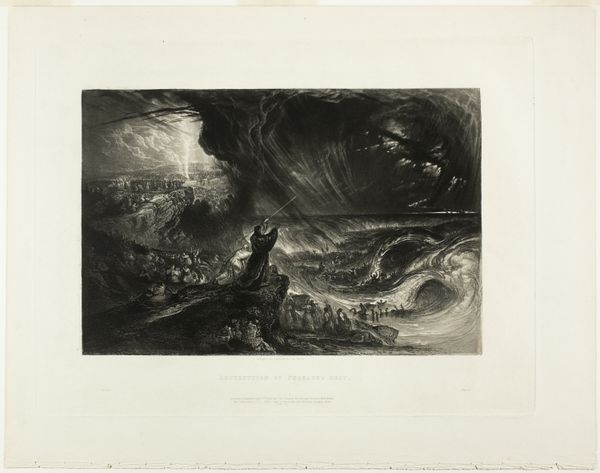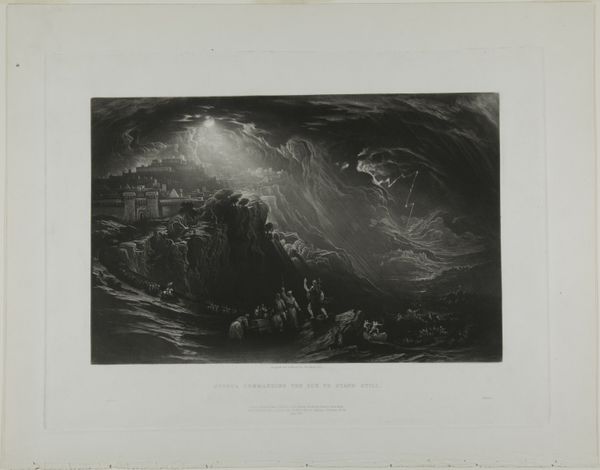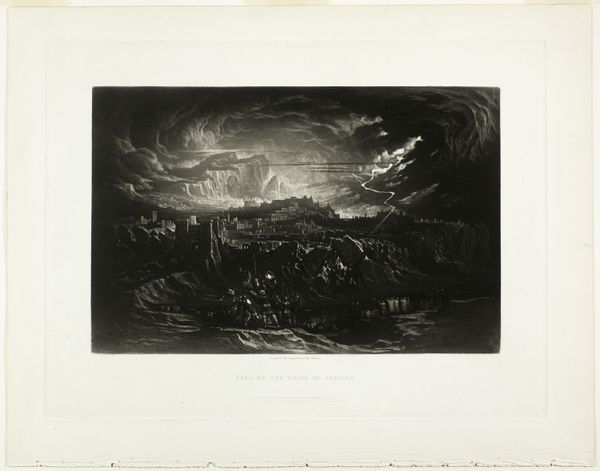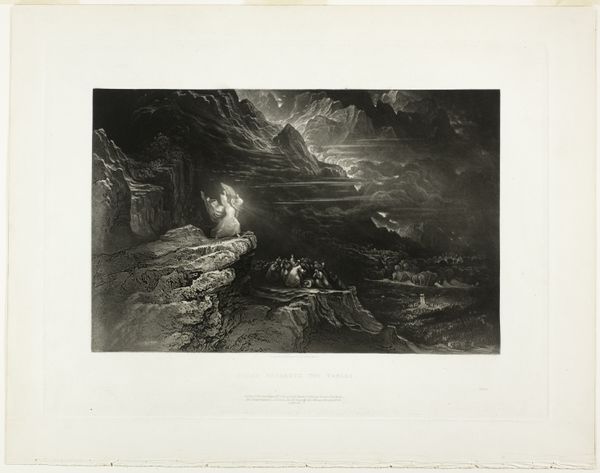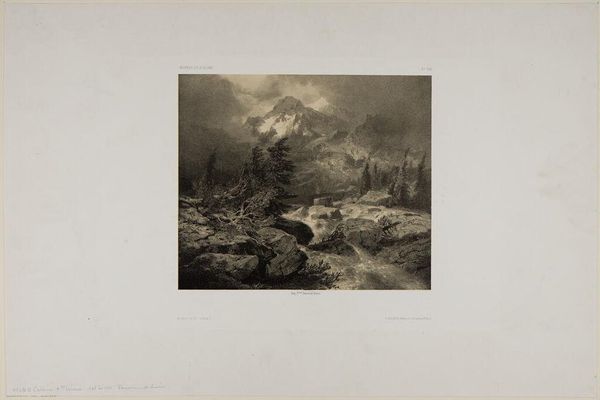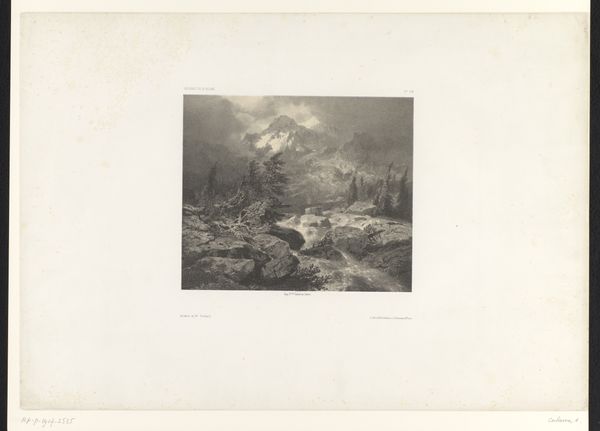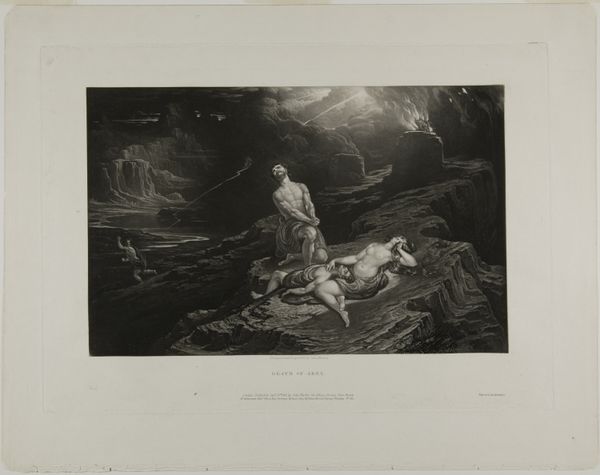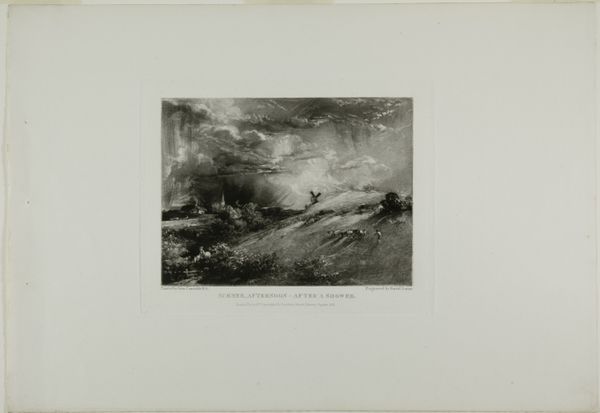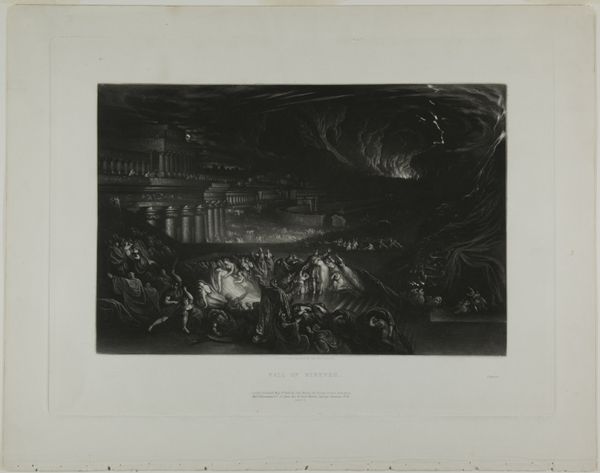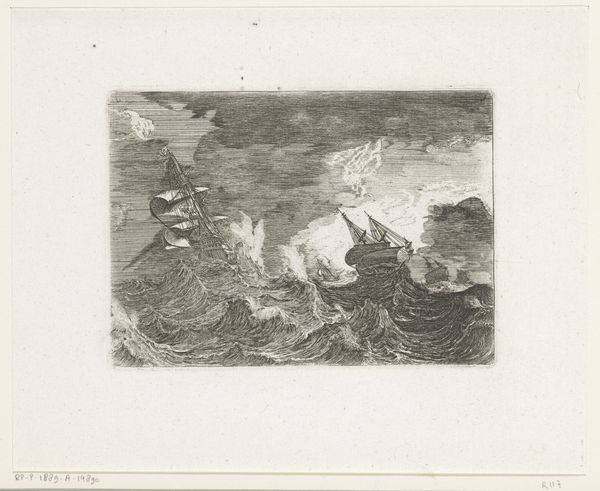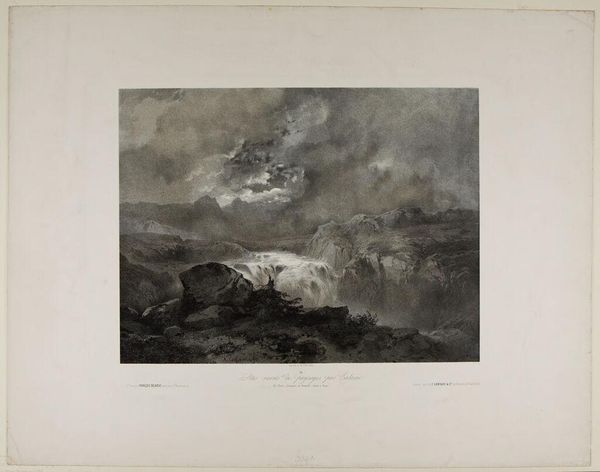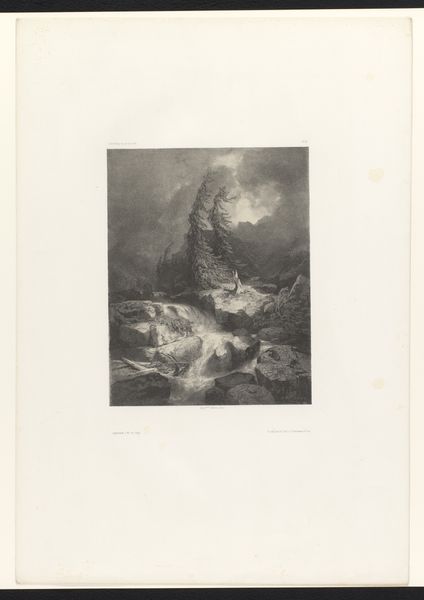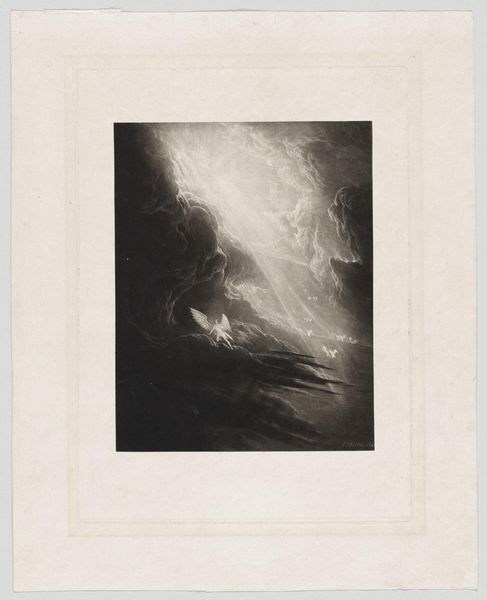
drawing, print, paper, engraving
#
drawing
#
allegory
#
narrative-art
# print
#
landscape
#
charcoal drawing
#
figuration
#
paper
#
romanticism
#
line
#
history-painting
#
engraving
Dimensions: 190 × 290 mm (image); 268 × 357 mm (plate); 329 × 416 mm (sheet)
Copyright: Public Domain
Curator: Here we have John Martin's "The Deluge, from Illustrations of the Bible," created in 1831, employing engraving on paper. It’s currently held at the Art Institute of Chicago. Editor: My initial reaction? Overwhelming. A churning mass of bodies, water, and rock. There's a sense of utter chaos and despair conveyed through the intense contrast of light and shadow. Curator: The depiction of this biblical event offers fertile ground for examining themes of divine retribution and human suffering. How does it speak to the historical context of the early 19th century? This period was marked by immense social change and upheaval and was also informed by religious revivalism, but perhaps more interesting than religious belief alone is this artist's sense of visual theater and spectacle. Editor: Absolutely. Considering the print medium itself, the accessibility would have enabled a wide audience to grapple with themes of class division and labor inherent to catastrophic events. I am thinking that an interpretation rooted in materiality considers who would have engaged with it in the wake of new technologies and who could have consumed images in relation to other objects within the Victorian home. Curator: Martin's portrayal also intersects with prevalent discourses on gender and power, evidenced in the distressed figures and the romanticized ideal of masculine strength amidst destruction. What sociopolitical narratives can we extract from the ways that human figures navigate it? Editor: Focusing on process, observe the artist's technical mastery. Engraving requires rigorous and dedicated skill. Its creation involves meticulous planning, time-intensive labor, and specific tools. Curator: This highlights a narrative around industrial progress, yet it seems deeply ambivalent about its impact on both individuals and society, pointing towards issues that are very resonant now such as disaster capitalism, or the environmental cost of capitalism and colonialism. Editor: I appreciate that. We shouldn’t forget how the production conditions and artistic skill merge with Martin's grand vision. It brings forth questions about artistic labor as social critique. Curator: Ultimately, John Martin invites us to question the established norms, inviting reflection on collective identity. Editor: Exactly, acknowledging artistic techniques alongside its reception in society, brings richer appreciation to this engraving.
Comments
No comments
Be the first to comment and join the conversation on the ultimate creative platform.
